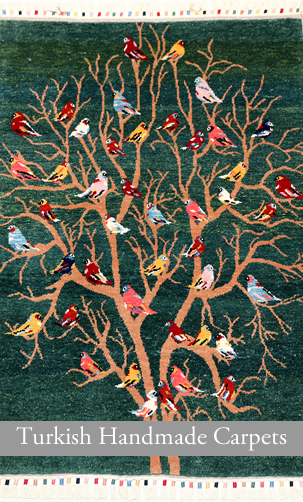Both Carpets and Kilims like other textiles, need some care and attention such as occasional cleaning and restoration when any damage occurs.
The Turkish word sakat, meaning 'unwell', is charmingly used to describe such problematic rugs.
Hand-woven rugs will last for years if looked after properly.
Direction: maintenance of your kilim and carpet
With appropriate maintenance, you can use kilims and carpets for many decades.
You don’t need to be so nervous using kilims basically.
There are a few cases (color fading and cloth shrinking), so please be a little careful to avoid such cases.
Although we described it in exaggerated way first, everyday maintenance of kilim is very easy.
You can clean your kilim with a vacuum cleaner.
Patting it occasionally outside is also fine to brush the dust off.
When you want to dry your kilim, keep it in the shade.
Don’t leave it in the sun for many hours.
Concerning cleaning of kilim, we recommend dry cleaning to all customers.
If you wash kilim yourself, rub it with a wet-cloth or a wet-tissue paper at first and make sure of its colorfastness.
Use a wool detergent or a shampoo on a plain surface.
After spin-drying, smooth out a crumpled piece of kilim, and dry it on a place surface in the shade.
If your kilim fades, take it to s laundry and tell its fading for a cleaner.
Stains with foods and beverage need treatments quickly.
Effective Solutions for Stains
Alcohol drinks:
Pat with a towel wetted with lukewarm water and alcohol.
Dirt:
Dry completely, and use a vacuum cleaner.
Chocolate:
Pat with a sponge wetted with ammonia.
Candy and other sweets:
Wipe softly with a towel wetted with lukewarm
Ink:
Pat with a sponge wetted with water, soap, alcohol.
Fruits:
Wet a sponge with vinegar, lemon juice, or ammonia, and pat.
Egg:
Don’t use hot water. Dilute ammonia with water, and drop it on the stain.
Then pat with a towel or a sponge wetted with water and alcohol.
Blood:
Don’t use hot water.
Pat with a sponge wetted with salt water.
If it isn’t effective, pat with a sponge wetted with white wine.
When the stain already get dry, give a brush and pat with a sponge wetted with weak ammonia water.
Urine:
Dry the stain with a towel and wipe off with a towel or a sponge wetted with white wine and vinegar.
If it isn’t effective, pat with a towel or a sponge wetted with alcohol and ammonia.
Safekeeping and Insect Repellent
When you put your kilim away in a container or a box, an insect repellent is necessary.
You should fold your kilim and keep in a container with an insect repellent.
Carpet should be rolled up and covered, then keep with an insect repellent.
Don’t stand the rolled-up carpet vertically. A Carpet should be put on a plain surface.
Storage
If it is necessary to store kilims for any length of time, certain precautions must be taken.
Firstly, the rug should be washed, and preferably mothproofed - moths, as a general rule, like to breed in areas where air does not circulate.
(It is not the moth itself that destroys the textile, but the larvae.)
Before storing, any textile should be wrapped in airtight packaging, with moth balls, and it is preferable to store fabric of any type in rolls rather than folded up.
If possible, acid-free paper should be placed between the folds or rolls of the textile, and moth balls should not actually touch the fabric.
Stored kilims should be kept at a constant temperature to prevent any condensation occurring inside the airtight packages.
It is also advisable to wash, or at least air the kilim when it comes out of storage, to discourage moths further, as they like to breed in undisturbed conditions.
Other possible predators are mice and rats, which will only be deterred if they are denied access, so rugs and textiles should be stored in a suitable container.
Please note that insurance policies to not cover any of the above possible hazards.
Repair
The well-known saying 'a stitch in time' is true of all repairs.
It is advisable to consult a professional restorer or dealer before sending a rug for restoration or repair, as they will always give an estimate for any work that is necessary, and tell you whether it is worth the cost-at times, particularly if a rug is very old, the wool may have become so brittle (particularly if it has been neglected and unwashed for many years) that repair may not be financially viable.
Restoration is a skilled art, and it will only cost more if bad repairs have been carried out and subsequently have to be removed before proper restoration is effected.
Fringes will be the first part of the kilim to deteriorate, and vacuum cleaners are lethal.
If the fringe disintegrates or is damaged, the actual weave of the rug will be next.
Stopping fringes from unraveling is easily done; reweaving the ends can be very costly.









